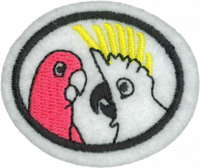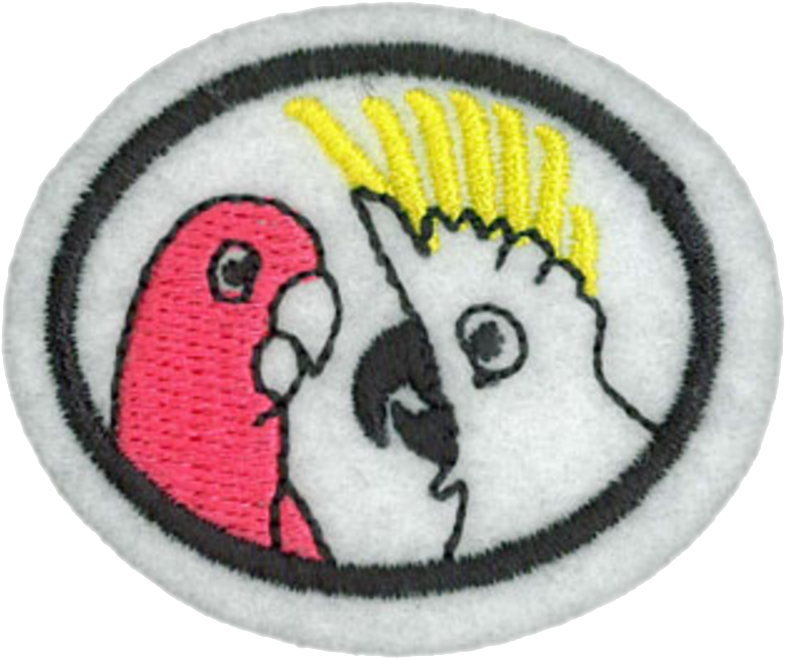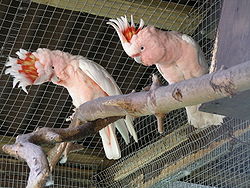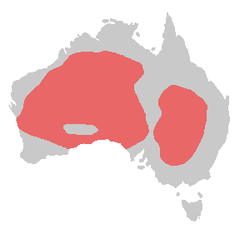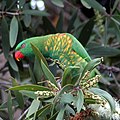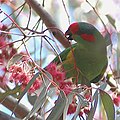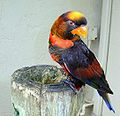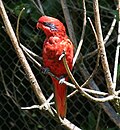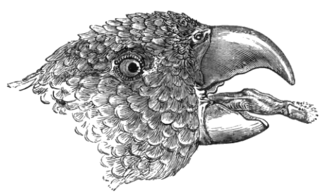Especialidades JA/Loros y cacatúas/Respuestas
Nivel de destreza
2
Año
2001
Version
05.12.2025
Autoridad de aprobación
Asociación General
1
2
Grey-cheeked Parakeet
The Grey-cheeked parakeet (Brotogeris pyrrhoptera), less commonly known as fire-winged parakeet, is a species of parrot in the Psittacidae family.
3
3a
3b
3c
4
5
6
7
8
With its soft-textured white and salmon-pink plumage and large, bright red and yellow crest, Major Mitchell's Cockatoo is generally recognised as the most beautiful of all cockatoos. It is named in honour of Major Sir Thomas Mitchell, who wrote "Few birds more enliven the monotonous hues of the Australian forest than this beautiful species whose pink-coloured wings and flowing crest might have embellished the air of a more voluptuous region".
It is restricted to arid and semi-arid inland areas of Australia (see map).
9
Lories and lorikeets are small to medium-sized arboreal parrots which comprise the subfamily Loriinae. They are widely distributed throughout the Australasian region, including south-eastern Asia, Polynesia, Papua New Guinea and Australia, and the majority have very brightly colored plumage.
Lories and lorikeets have specialized brush-tipped tongues for feeding on nectar and soft fruits. They can feed from the flowers of about 5,000 species of plants and use their specialised tongues to take the nectar. The tip of their tongues have tufts of papillae (extremely fine hairs), which collect nectar and pollen.
10
Here are a couple examples.
The Musk Lorikeet breeds mainly from August to January. Their nest are usually built in a hollow limb of a tree. Two white 25 mm × 20 mm (0.98 in × 0.79 in) eggs are laid.
Golden-shouldered Parrot lives in open forest. An important habitat requirement is the provision of terrestrial termite mounds, which the bird uses for nesting. This has led to the parrot also being known as the Antbed Parrot. They will preferentially seek out taller mounds (up to 2 m high), and will dig a burrow into them when the mound has been softened by the rains. A long tunnel is dug down into the mound, and capped off by a nesting chamber. The mound regulates the temperature in the chamber, keeping it high enough that the eggs can be left unattended while the parents feed. A borrow and nesting chamber are dug from a termite mound, normally by the female, between March and June. Mounds are usually only sufficiently large enough for nesting when they are 30 to 50+ years old, and are rarely occupied more than once, possibly due to the persistence of nest parasites, such as lice, or because mounds repaired by termites are difficult to excavate. Thus there are problems in some areas where most mounds of a suitable size have already been used The clutch size is between 3-6 eggs which are white and almost spherical and incubated for 20 days.
11
If there are no parrots and cockatoos in your area, make a list for an area where they do live.
